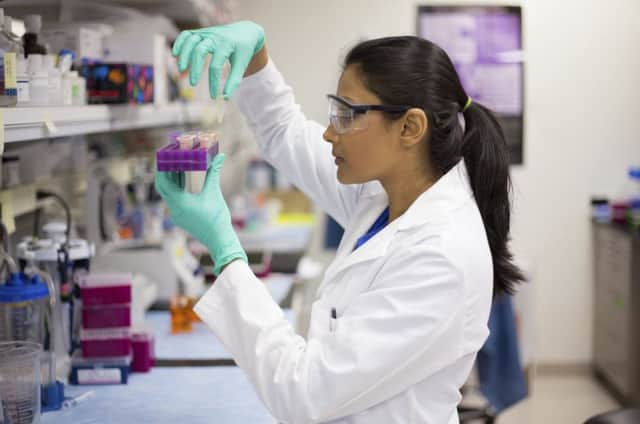Immune response to resistance crisis


From Fleming and penicillin to Black and beta blockers, Scottish inventors have played an integral role in the history of drug development. As a country, we have contributed greatly to innovation in life sciences but most readers will be aware of the threat now posed by antibiotic resistance. Decades of misprescription and overuse of antibiotics and other anti-infectives has led us to this point – but what is being done to counter this danger? In addition to improved diagnostics tools, which will help medical staff to identify quickly which anti-infectives are needed to treat an infection, research into new anti-infectives is desperately needed.
We recently conducted research into patenting levels in anti-infectives research and compared these to patenting levels in vaccines research – which are similar to anti-infectives in that they also are intended to treat widespread conditions – and contrasted these with levels for rare disease treatment research. Patent filing levels are often seen as a proxy for research levels, given the importance of protecting inventions (across all technologies) with patents in order to commercialise them.
Advertisement
Hide AdAdvertisement
Hide AdOur research showed that patent filings for anti-infectives lag significantly behind those for rare disease treatments. Over the past decade, there have been around 1,200 patent families filed per year in anti-infectives-related research, while the numbers of rare disease treatment research have been nearer to 4,000 per year. What is more, less than 5 per cent of patents on anti-infectives relate to new classes of antibiotics. New antibiotics to which bacteria are yet to develop resistance will be key to our fight against disease in the future.
Why would there be less research going into antibiotics than into rare diseases? Many governments have recognised the commercial challenge of conducting research into treatments for conditions affecting only small proportions of the population (known as “orphan drugs”). Governments of many developed economies, including the United States, Japan and the European Union, now offer incentives via national and supranational regulatory bodies to companies developing treatments for rare diseases. These range from protocol assistance, fee reductions, tax credits or protection from competing products in the form of market exclusivity periods.
Meanwhile, companies are aware of the risk of discovering a new antibiotic, only for it to be so quickly overused and misused that bacterial resistance quickly spreads. If antibiotics research is going to increase, extra incentives for companies to innovate in this area are clearly needed. In May 2015, the chair of the UK Review on Antimicrobial Resistance, Jim O’Neill, announced that the world needed a global fund to drive the development of new and effective antibiotics. Indeed, when we spoke to NovaBiotics, an Aberdeen-based company that develops novel anti-infective agents for clinically challenging bacterial and fungal infections, we found that it was using orphan drug designations for some its products.
It is not just the total numbers of patent families filed that tell the story of a neglected sector. It becomes even clearer when you look at the numbers filed by the world’s top ten pharmaceutical companies (according to Scrip 100 2014). Over the past decade, “big pharma” filed 8,689 patent families relating to rare disease treatment, but only 1,195 relating to anti-infectives. Vaccines were slightly more at 2,113. However, as Deborah O’Neil, chief executive officer of Novabiotics told us, “After years of neglect and indeed a number of major players exiting this technology [anti-infectives], it seems clear that we are at the beginning of a resurgence in activity, likely to be driven by SMEs.”
Vaccines perhaps occupy a space between antibiotics and rare disease treatments. Here, we have seen a deal of corporate transactions over the past decade, including the transfer of Novartis’ vaccines business (excluding its flu vaccines) to GlaxoSmithKline. The list of Top Filers in this space has plenty of non-corporate entities on it, unlike the rare disease and anti-infective fields. The list is topped by the US Department of Health and also features US universities (California, Texas and Pennsylvania), Institut Pasteur and the Harbin Veterinary Institute. This shows a huge government interest.
Additional research we carried out in collaboration with CPA Global sheds more light on the UK’s role in the fight against antibiotic resistance. In our Microbial infection: Point-of-care diagnostics report, we examined patent filing behaviour and found that the UK is second only to the US in terms of patents filings related to antimicrobial point-of-care diagnostics tests over the past five years. This is an encouraging sign, but more must be done. Perhaps now is the ideal opportunity for innovative Scottish companies to channel the spirit of Fleming and Black and make their mark on the world of life sciences.
• Dr Paul Chapman is a partner and patent attorney at Marks & Clerk www.marks-clerk.com